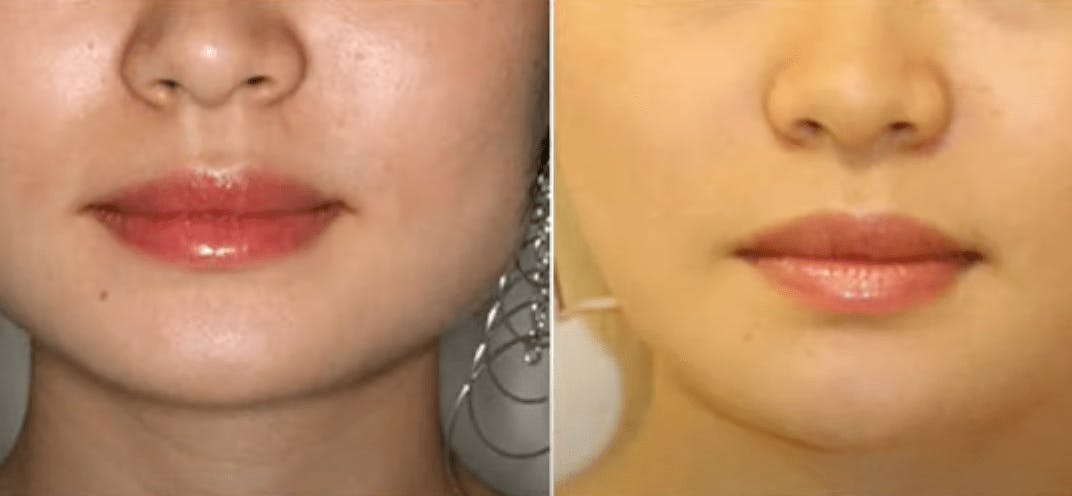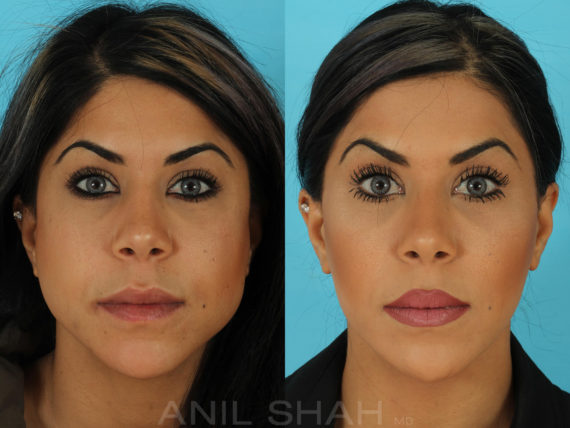Recovery Time From TMJ Disorders
Typically, there is no recovery time for this procedure.
What Are Signs That My Facial Pain Is Related To My Masseter Muscle Or Jaw Muscles?
Sometimes the underlying culprit is not as obvious. Classically, a prominent muscle along the jaw and/or temple area signifies a larger than ideal muscle putting pressure on the TMJ. If your joint hurts after chewing it typically signifies a cause and effect, but this is not necessary in all cases. Finally, worn down teeth can signify teeth grinding which is caused by jaw muscle hyperactivity, for this, dental implants can sometimes help resolve the TMJ-related pain.
Does The Location Of The Culprit Muscle Vary By Ethnicity, For Example Do Caucasian Patients Tmj’s Muscles Involved Differ From The Muscles Involved For An Asian Patient?
The masseter muscle is often responsible for hyperactivity and pressure along the TMJ. In Caucasian patients, the temporalis muscle can play a larger role as well.
Do Bite Guards Work?
Bite guards are a bad idea for several reasons. First of all, bite guards place the jaw in a nonanatomic position which slightly opens the TMJ joint but not relieving pressure. Second of all, bite guards tend to smell bad (despite copious brushing of guard and antibiotic rinses) due the bacteria of the mouth. Bite guards are also expensive often costing more than Botox jaw treatments. In addition, bite guards do not fix the problem which is a hyperactive muscle, but only attempt to protect your teeth from further damage. Botox will decrease the muscle strength and bite force and often prevent you to clench or grind your teeth, hence why we think Botox is a better solution. Finally, it is one more inconvenient, as well as socially awkward step to have to place a bite guard in your mouth rather than simply have the muscle weakened.
Can BOTOX Extinguish TMJ Permanently?
Repeating injections can help prevent permanent damage to the TMJ. They can also help decrease pain. If the joint has eroded too far, then BOTOX may not be able to preserve an already damaged joint
What Is The Anatomy Of The Temporomandibular Region?
The temporomandibular joint is a highly complex joint composed of articular disc. The disc of the TMJ is surrounded by a special fluid called synovial fluid. This provides the articular disc with a milieu to keep it intact. Once the articular disc erodes, little can be done to protect the interaction between the temporomandibular joint and the skull. There are 3 ligaments associated with the joint called the temporomandibular ligament, the stylomandibular ligament and the sphenomandibular ligament. These ligaments serve to keep the joint in place.
Is TMJ Surgery Effective?
Not typically due to type the temporomandibular joint being a bicondylar joint which slides back and forth. Surgery can damage the articular disc. Botox is less risky than oral surgery and can help preserve the disc.
Anything I Can Try First Prior To BOTOX?
Patients should avoid gum chewing and try a soft diet. In addition, if there is pain, the use of NSAIDS if not contraindicated can help decrease inflammation to the jaw joint.
Does Working Out Exacerbate It?
If you’re a clincher, especially male weight lifters, then the muscle can be hypertrophied and place pressure on the delicate TMJ.
Does It Get Worse With Age Or Better?
Typically it gets better with age if you treat it early and before the joint wears down.
Does Insurance Cover It?
Patient can file their insurance but typically does not cover it
Are There Risks With BOTOX Injections For The TMJ?
The biggest risks are putting BOTOX in the wrong spot. If the injector incorrectly places it, then it will freeze the facial muscles and not the masseter muscle. This will cause a temporary paralysis that can last up to 6 months. In addition, if the BOTOX is not placed in the right portion of the masseter muscle, the treatment will be ineffective.
Can A Dentist Inject BOTOX?
Facial anatomy is different than dental anatomy. If Botox is placed in wrong area, they will have 6 months of face dysfunction.
Does It Cost More Or Less Than Mouthguard?
Typically Botox for TMJ costs less or about the same as a custom dental mouthguard.
Is BOTOX Poison?
Any substance in high dose is poison which includes Botox. It does have a high track record of safety and has been proven to be both safe and effective.
Does Physical Therapy Work?
In our experience it does not- need to relieve pressure along joint. Muscle exercises or stretching does not seem to help improve the joint.
What Does BOTOX Do?
Relieves pressure on joints by decreasing the force that muscles exert on the joint. The cause of many types of tmj problems for most patients is muscular hypertrophy. Eliminating pressure on the joint will relieve pain and possibly preserve the joint.












